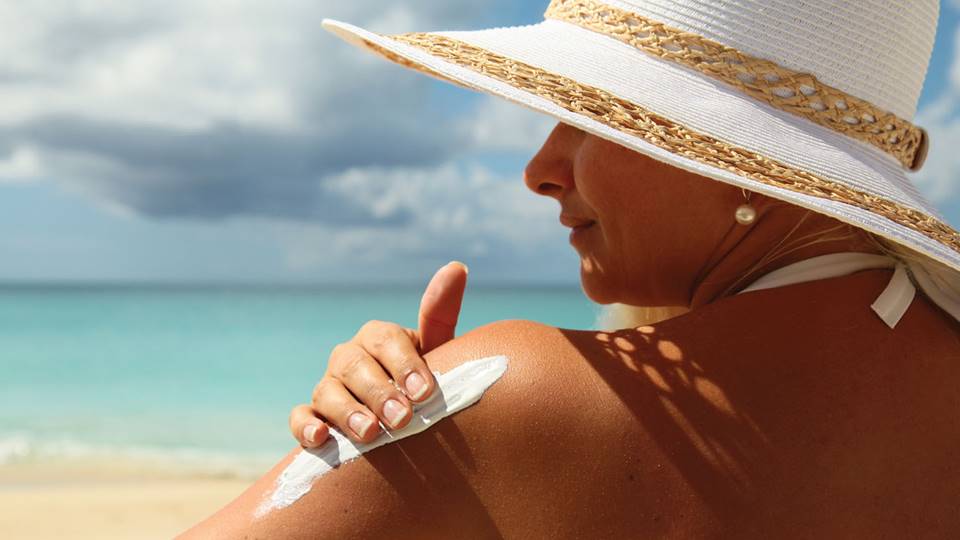
Sunburns are no fun. The sun is a beautiful thing. It gives us warmth and light and allows us to enjoy outdoor activities all year. But if you’re not careful, the sun can also cause severe damage to your skin. Sunburn prevention is crucial for maintaining healthy skin.
The skin’s response to too much ultraviolet (UV) light from the sun is sunburn. In addition, sunlight and heat (infrared radiation) may be seen and felt, but UV radiation cannot. Therefore, it can harm your skin even on cool, foggy days. In addition, radiation burns to the skin include sunburn. Usually, a minor sunburn heals in a few days or fewer.
When you get sunburned, your body reacts to damage from ultraviolet (UV) rays by producing extra pigment (color) in your skin cells. The result is a painful redness lasting for several days or weeks. Fortunately, there are plenty of ways to protect yourself from sunburns and other skin damage this summer.
I. Causes of Sunburn
Regardless of whether you wear sunscreen, you can acquire a sunburn in as little as 15 minutes on a bright day. Therefore, sunburn isn’t just uncomfortable; it makes your skin prematurely aged and more susceptible to skin diseases.
A. Exposure to UV rays
- UV rays are the most common cause of sunburn.
- It comes from the sun and can penetrate clouds, smog, and even water.
- It’s important to remember that you can still get sunburned on cloudy days or when it is raining; UV rays bounce off these surfaces instead of directly hitting your skin.
- The severity of your sunburn is determined by how long the exposure to UV rays and how strong they are.
B. Age and Gender Skin type
- Age and Gender Skin color is one of the most critical factors determining whether you will get sunburn. Additionally, a person with fair skin, regardless of age and gender, is more likely to burn than someone with darker skin.
- Darker-skinned people are less likely to get sunburned because they have more melanin.
- Melanin is a natural sunscreen that absorbs UV rays before they penetrate your skin’s deeper layers.
C. Medications that increase sun sensitivity
- Some medications have components that could lead to photosensitivity, a skin alteration brought on by chemicals.
- Some of these medicines include:
- Antibiotics
- Antifungals
- Antihistamines
II. Sunburn Prevention 101: How to Prevent Sunburn
Learn how to shield your skin from UV radiation and avoid becoming sunburned. Therefore, use these sunburn prevention techniques to enjoy the outdoors safely.
- Stay inside between 10 a.m. and noon. Particularly between midday and 4 p.m., when the sun is hottest.
- If you want to be outside, spend as much time as possible in shaded locations.
- Every two hours, reapply sunscreen.
- Wear protective clothing, such as long-sleeve shirts, slacks, caps, and sunglasses.
III. Choosing the Right Sunscreen
Finding the right sunscreen for your skin type helps avoid skin irritation. It also increases the likelihood that you will use sunscreen regularly.
A. Factors to Consider when Choosing the Right Sunscreen
- Ideally, it would be best to use sunscreen with an SPF of at least 30.
- A broad-spectrum sunscreen is what you should seek out.
- Consider your skin type when choosing sunscreen.
- Choose a water-resistant sunscreen that can stay on your skin for longer.
Considering these factors, you can choose a sunscreen that effectively protects your skin from the sun’s harmful rays.
B. Different types of sunscreen
- For Dry skin types, look for sunscreens that have hydrating ingredients, such as:
- Glycerin
- Hyaluronic acid
- Ceramides
- For Oily Skin Types:
- Over a mineral or physical sunscreen (produced with zinc oxide), use chemical sunscreen.
- In comparison to mineral sunscreens, chemical sunscreen is often drier. However, there are still lots of choices for a mineral sunscreen.
- For Acne-prone Skin types:
- Since thicker products might lead to clogging and flare-ups, use thinner lotions and cosmetics that are especially non-comedogenic (not prone to clog pores).
IV. Treating Sunburn
Sunburn treatment can reduce pain, swelling, and irritation but not repair the skin. Your doctor may advise a prescription corticosteroid cream if self-care measures fail to relieve your sunburn or it is severe.
A. Over-the-counter treatments:
- Ibuprofen and acetaminophen, two over-the-counter painkillers, can help lessen pain and inflammation.
- You can use topical creams for itching and pain relief.
B. When to seek medical attention:
- If your sunburn is severe and covers a significant portion of your body, get medical attention.
- The repercussions of severe sunburns, such as sun poisoning, call for immediate medical attention.
V. Home Remedies and Lifestyle
For a healthier you, learn about practical home cures and lifestyle adjustments. From natural remedies to simple lifestyle tweaks, learn how to improve your well-being with expert tips and advice.
- Use an analgesic. Take a nonprescription pain reliever after getting too much sun to relieve the pain as soon as possible.
- Cool down your skin. Take a cool bath containing baking soda; use 2 ounces (60 grams) per tub. Several times per day, cool the skin for roughly 10 minutes.
- Apply a lotion, gel, or moisturizer. Calamine lotion or an aloe vera gel might be calming.
- Drink plenty of water. It will help you prevent dehydration.
- Be patient with blisters. The skin might recover faster if the blister is intact. On the other hand, if a blister ruptures, remove the dead skin with a pair of clean, tiny scissors.
- Gently handle skin that is flaking. The impacted area may start to peel after a few days. Therefore, use a moisturizer even if your skin is flaking.
A. Baking soda
- You can minimize the sun damage by adding a couple of heaping tablespoons of baking soda to a bathtub full of cool water and soaking for 15 to 20 minutes.
- Don’t scrub your skin in the bath or after getting out. Instead, dab yourself dry with a towel — don’t rub.
B. Aloe vera
- You should get one if you need an aloe vera plant.
- Try an aloe vera gel that is 100 percent pure if you can’t get your hands on a plant. These gels are typically available in pharmacies.
C. Chamomile tea
Not only can chamomile tea soothe your spirit, but it also benefits burnt skin. First, brew the tea as usual and let it cool. After that, when it’s ready, apply it to the affected region using a wet washcloth.
D. Vinegar
Add two cups of vinegar to cool bath water. It will help soothe burns.
E. Wear loose clothing
Wear clothing that won’t stick to you while your skin is healing. Additionally, given that your skin is the largest organ in your body, it is preferable to provide it some breathing room as it recovers from a severe stressful event like a sunburn. Therefore, the best after-sunburn covers are those made of natural fibers, including cotton or bamboo.

